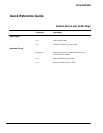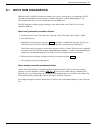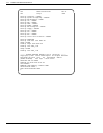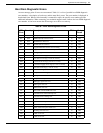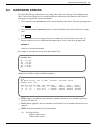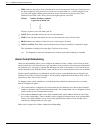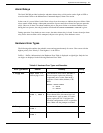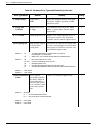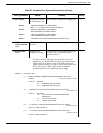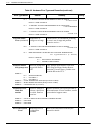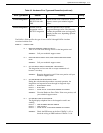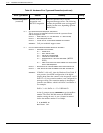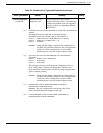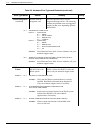
System Errors and Traffic Pegs 8-7
Octel 200/300 S.4.1PB60019−01
Alarm Relays
The Octel 200/300 provides both major and minor alarm relays, which can be used to light an LED or
sound an alarm. Refer to the Maintenance Commands chapter, Alarm Test section.
In the event of a power failure, both of these relays close the contacts to indicate the power failure. Both
relays remain closed during a subsequent restoration of power until the software boot process opens the
relays. However, if there is an alarm condition prior to the power failure or an alarm condition arises
during the boot process, the relay(s) remain closed until the CLEAR HARDWARE command is given.
During operation, if any hardware error occurs, the minor alarm relay is closed. In turn, the major alarm
relay closes when an alarm call is attempted, subject to the priority of the hardware errors.
Hardware Error Types
The following table outlines the probable cause and suggested remedy for errors. Clear errors with the
highest priority first. Priority 3 is the highest, 1 is the lowest.
DATA-1 − DATA-4 information in the Hardware Error Table is displayed as eight digits. Only the last
two digits are displayed in the following Hardware Error Table.
Table 8-2 Hardware Error Types and Remedies
Error Type:Name
Source Remedy Priority
1: Floppy Disk TEST FLOP 1 or
while trying to read
Clear Hardware Error Table. Run TE F 1.
If errors repeat, replace the following
components one at a time. Run TE F 1
each time. Check cables, diskette, CPU,
MFD.
DATA-1 = ERROR CODES
01 = READ
02 = WRITE
1
2: Tone Reflection Selftest or TEST
LINE 1, TEST L
5
Clear Hardware Error Table. Run TE L 1.
If one channel fails, disconnect line card
and run TE L 1 again or TE L 5. If errors
repeat, replace the LIC. If all lines fail,
check the configuration or VCU as possible
cause. Make sure the prompts are loaded.
2
3: Prompt Selftest or TEST
LINE 1
Same as error 2. 2
4: DTMF Reflection Selftest or TEST
LINE 1
Same as error 2. 2



